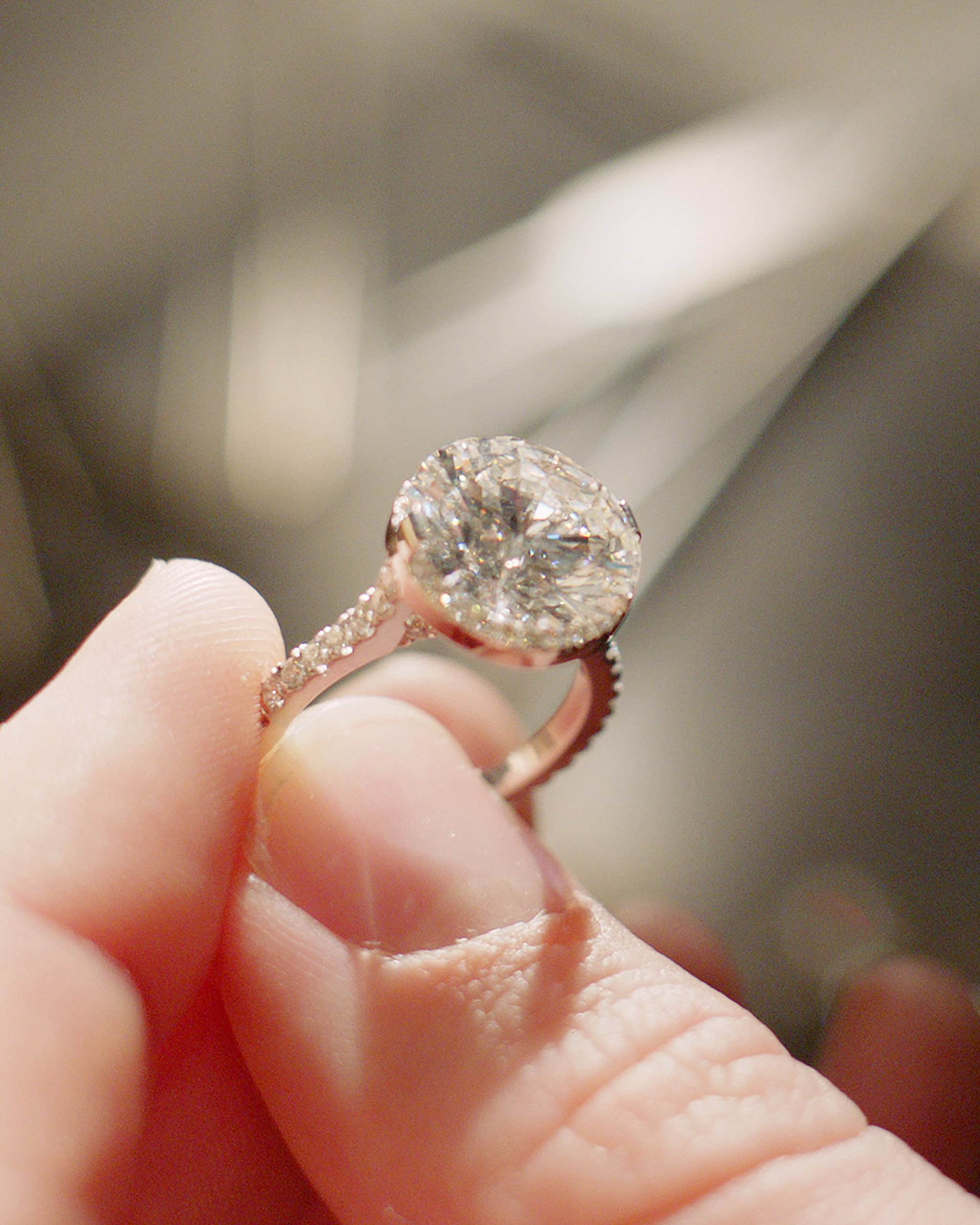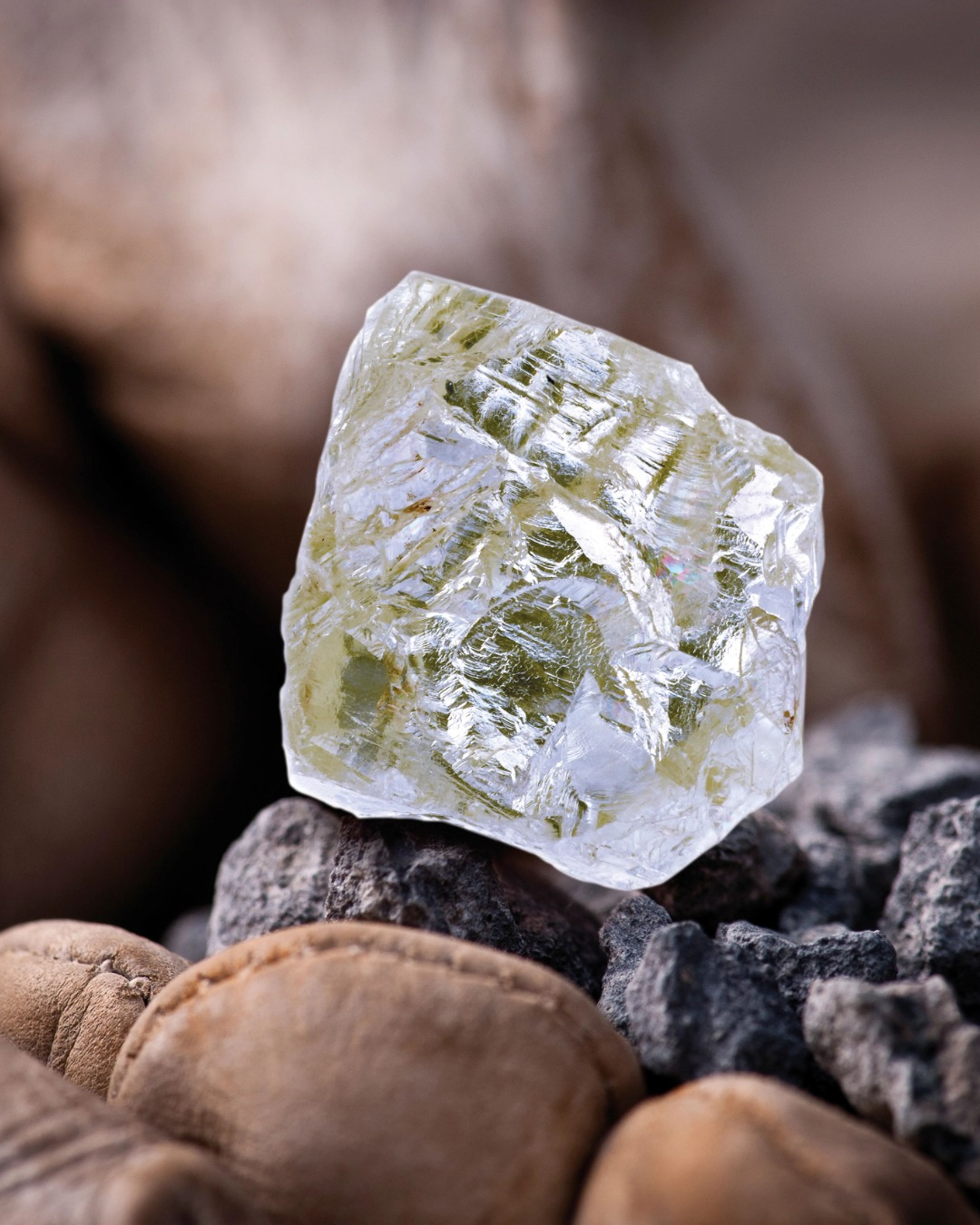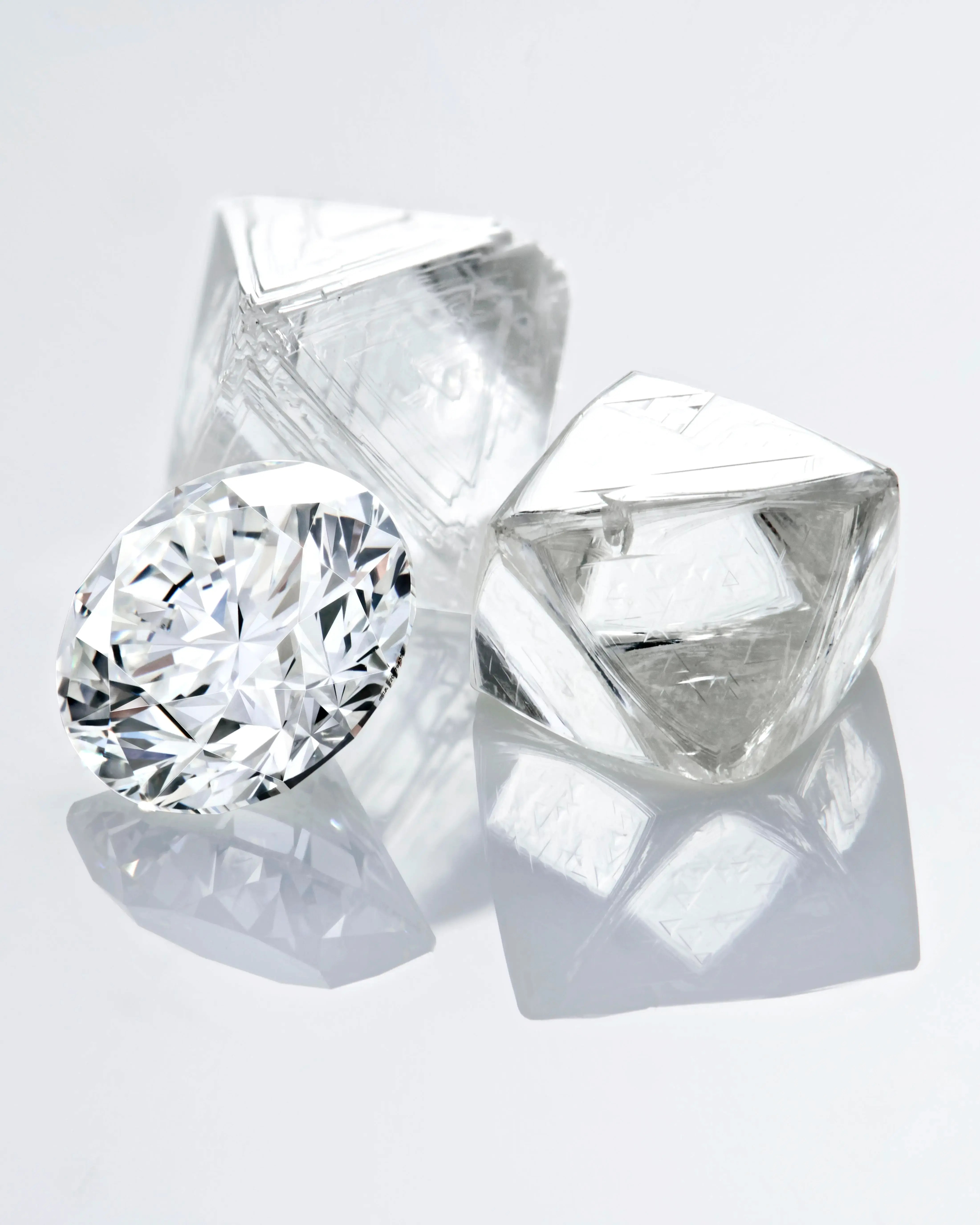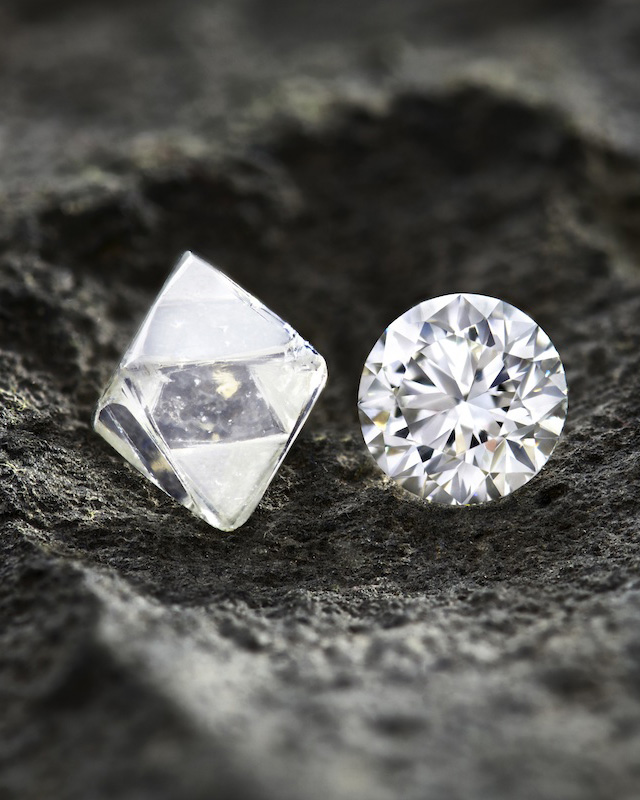Natural diamonds form over billions of years deep within the Earth under extreme heat and pressure.
Natural Diamonds vs. Moissanite
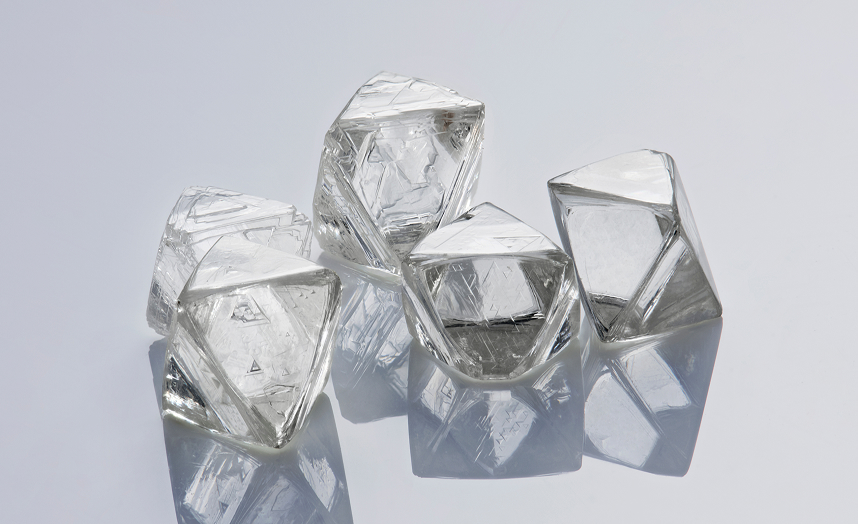
 Naturally Made
Naturally Made
 Finite Supply
Finite Supply
Natural diamonds are rare and limited in supply, with only a certain amount available on Earth.
 Benefits Country of Origins
Benefits Country of Origins
Diamond mining provides economic support and employment in diamond-producing regions around the world.
 3 Billion Years Old
3 Billion Years Old
Natural diamonds are ancient, typically 1-3 billion years old, making them some of the oldest substances on Earth.
 Hardest Substance on Earth
Hardest Substance on Earth
Diamonds are the hardest natural material on Earth (10 on the Mohs scale), extremely resistant to scratching.
 Classic White Sparkle
Classic White Sparkle
Diamonds exhibit exceptional brilliance and fire with a unique combination of white light reflection and colorful dispersion.
 Emotionally Significant
Emotionally Significant
Diamonds are the ultimate symbol of love and commitment, cherished for centuries as timeless representations of enduring relationships, milestones, and meaningful memories.

 Factory Made
Factory Made
Silicon carbide Moissanite is a lab-created gemstone made of silicon carbide.
 Abundant Supply
Abundant Supply
Moissanite can be produced in laboratories as needed, with no supply limitations.
 Made in 2 to 3 Months
Made in 2 to 3 Months
Moissanite is produced in factories in just 2 to 3 months and can be made in unlimited quantities.
 Less Durable
Less Durable
Moissanite ranks 9.25 on the Mohs scale, making it less durable than diamonds and more prone to chipping and scratching.
 Rainbow Sparkle
Rainbow Sparkle
Moissanite has higher refractive properties than diamonds, creating rainbow flashes that make them easily distinguishable from diamonds.

Due to its higher refractive index and greater dispersion, moissanite often produces a more colorful, “flashy” sparkle that can appear artificial compared to the classic brilliance of a natural diamond. With their unmatched hardness and timeless appeal, diamonds carry a sense of rarity, history, and enduring value that moissanite can’t replicate. While moissanite may offer an affordable alternative in some cases, it lacks the deep cultural significance and lasting value that natural diamonds hold.
Below, learn more about the differences between moissanite and diamonds.
What Is a Diamond?
Diamonds are the hardest naturally occurring substance on Earth, formed deep within the Earth’s mantle under extreme heat and pressure. They are composed of pure carbon, which gives them their legendary strength and durability. Diamonds form over billions of years and predate all life on Earth. They are the oldest thing you will ever touch—let alone own.
Diamonds are celebrated for their timeless beauty and cultural significance, especially in diamond engagement rings and fine jewelry. Their durability, rarity, and emotional connection set them apart from other gemstones. Diamonds are not just beautiful stones—they represent commitment, love, and lasting value, often becoming family heirlooms passed down through generations.

What Is Moissanite?
Moissanite is a gemstone made of silicon carbide, first discovered by French chemist Henri Moissan in 1893 in Arizona, when Moissan found traces of the stone in a meteorite. Today, moissanite is a lab-created gemstone that mimics the appearance of a diamond, also known as a diamond simulant. Moissanite has a higher refractive index than diamond, giving it extra sparkle. However, this can result in a “rainbow effect,” where the stone displays flashes of color that look less natural compared to a diamond’s brilliance. Unlike natural diamonds, moissanite is not a product of nature’s geological processes, and as such, it does not possess the same rarity or cultural significance. Because it is manmade, moissanite doesn’t hold the same investment potential or resale value as diamonds, which can retain their worth over time.
Moissanite vs Diamond: Key Differences
The decision between moissanite vs diamond ultimately depends on your priorities. Moissanite may be marketed as a diamond alternative, but the two gemstones are not the same. With their unmatched durability, unique history, cultural symbolism, and positive social and environmental impact, diamonds represent a lasting investment. When it comes to choosing a gemstone that will last a lifetime and hold its value, diamonds stand the test of time—both in terms of quality and emotional significance.
While moissanite and diamonds are used for similar purposes, their differences are clear in several important areas, as outlined below.

Brilliance and Sparkle
One of the most striking differences between moissanite and diamonds is their visual appearance. Moissanite and diamonds have distinct properties in both dispersion and refractive index. Moissanite has a higher refractive index than diamonds. This makes moissanite more reflective, producing an intense sparkle. Moissanite also has much higher dispersion than diamonds. This means moissanite creates more colorful flashes of light, often appearing more “rainbow-like.”
On the other hand, diamonds tend to reflect white light, contributing to their classic brilliance. Moissanite’s brighter, more colorful flashes can appear flashy or artificial in comparison to diamonds—even to the untrained eye.
Hardness and Durability
Diamonds are unmatched in hardness, scoring a perfect 10 on the Mohs scale of hardness. This makes diamonds virtually scratch-resistant and highly durable, ideal for daily wear. Whether set in an engagement ring or another cherished piece of jewelry, diamonds are built to withstand the test of time.
Moissanite is also durable, scoring 9.25 on the Mohs scale, but it is more prone to scratches or chipping over time. For those seeking a gemstone that will stay pristine for generations, diamonds offer unparalleled longevity.
Value
One of the main appeals of moissanite is its affordability, as it can be less expensive than diamonds. While moissanite’s lower cost may be tempting, it’s important to consider that diamonds offer much more than just visual appeal. The rarity, natural origin, and cultural significance of diamonds contribute to their worth, making them a long-term investment. Diamonds hold enduring value, often becoming treasured heirlooms passed down through generations, something moissanite cannot replicate.
Environmental Impact
When comparing moissanite vs diamond, environmental impact is an important consideration. Moissanite, being lab-created, is often promoted as a more sustainable and eco-friendly option. However, it’s important to recognize that the natural diamond industry has made notable progress in reducing its environmental impact. In fact, the environmental footprint of a one-carat natural diamond, from mine to final product, is comparable to that of manufacturing three smartphones.
Leading diamond producers generate $16 billion in net positive socioeconomic and environmental benefits annually in the countries where they operate, with 80% of these benefits remaining within local communities. The discovery of natural diamonds has brought transformative change to countries like Botswana and remote regions such as Canada’s Far North.
In contrast, the financial benefits from lab grown gemstone companies, like those producing moissanite, mainly flow to a small group of venture capitalists and investors. These companies have yet to demonstrate the same widespread, positive socioeconomic impact as the natural diamond industry.
Rarity and Sentimental Value
Diamonds are rare to find in nature, which significantly contributes to their value. The natural process that creates diamonds over billions of years adds to their mystique and appeal. Diamonds are not just gemstones—they symbolize enduring love, commitment, and personal milestones. This rarity and cultural significance make diamonds more than just jewelry; they are treasured family heirlooms.
Moissanite, on the other hand, lacks the same rarity and deep historical connection. It does not carry the emotional weight or symbolic meaning that diamonds do. For many, diamonds’ long-standing tradition of representing love and commitment makes them the ultimate choice for significant life events and the jewelry connected to them, such as engagement rings and wedding rings.
Color and Clarity
Both moissanite and diamonds are available in various colors and clarity grades. However, diamonds are available in a wider range of hues, as natural diamonds occur in every color of the rainbow.
Moissanite, however, tends to have a slightly yellow or greenish tint, particularly in larger stones. While high-quality moissanite may appear near colorless, it is generally not as clear or pure as a diamond. Diamonds, often have greater clarity and an overall more flawless appearance.

